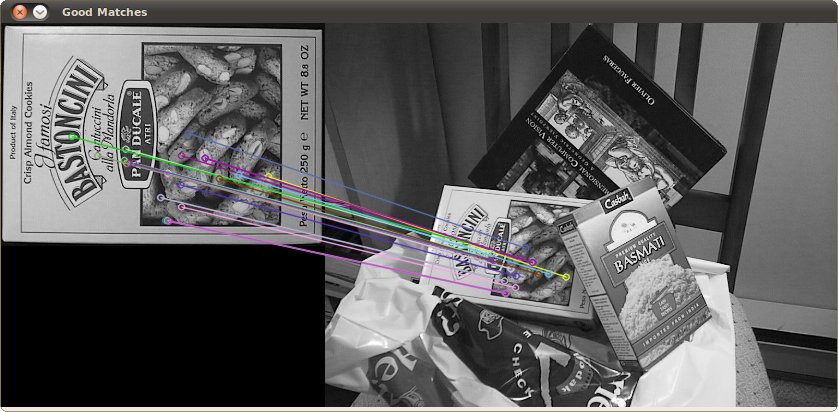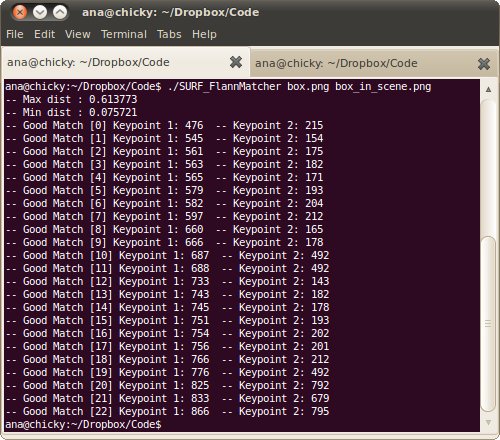This tutorial code's is shown lines below.
#include <stdio.h>
#include <iostream>
#include <stdio.h>
#include <iostream>
using namespace std;
using namespace cv;
using namespace cv::xfeatures2d;
void readme();
int main(
int argc,
char** argv )
{
if( argc != 3 )
{ readme(); return -1; }
{ std::cout<< " --(!) Error reading images " << std::endl; return -1; }
int minHessian = 400;
std::vector<KeyPoint> keypoints_1, keypoints_2;
Mat descriptors_1, descriptors_2;
std::vector< DMatch > matches;
matcher.
match( descriptors_1, descriptors_2, matches );
double max_dist = 0; double min_dist = 100;
for(
int i = 0; i < descriptors_1.
rows; i++ )
{
double dist = matches[
i].distance;
if( dist < min_dist ) min_dist = dist;
if( dist > max_dist ) max_dist = dist;
}
printf("-- Max dist : %f \n", max_dist );
printf("-- Min dist : %f \n", min_dist );
std::vector< DMatch > good_matches;
for(
int i = 0; i < descriptors_1.
rows; i++ )
{
if( matches[i].distance <=
max(2*min_dist, 0.02) )
{ good_matches.push_back( matches[i]); }
}
good_matches, img_matches, Scalar::all(-1), Scalar::all(-1),
vector<char>(), DrawMatchesFlags::NOT_DRAW_SINGLE_POINTS );
imshow(
"Good Matches", img_matches );
for( int i = 0; i < (int)good_matches.size(); i++ )
{ printf( "-- Good Match [%d] Keypoint 1: %d -- Keypoint 2: %d \n", i, good_matches[i].queryIdx, good_matches[i].trainIdx ); }
return 0;
}
void readme()
{ std::cout << " Usage: ./SURF_FlannMatcher <img1> <img2>" << std::endl; }




 1.8.7
1.8.7